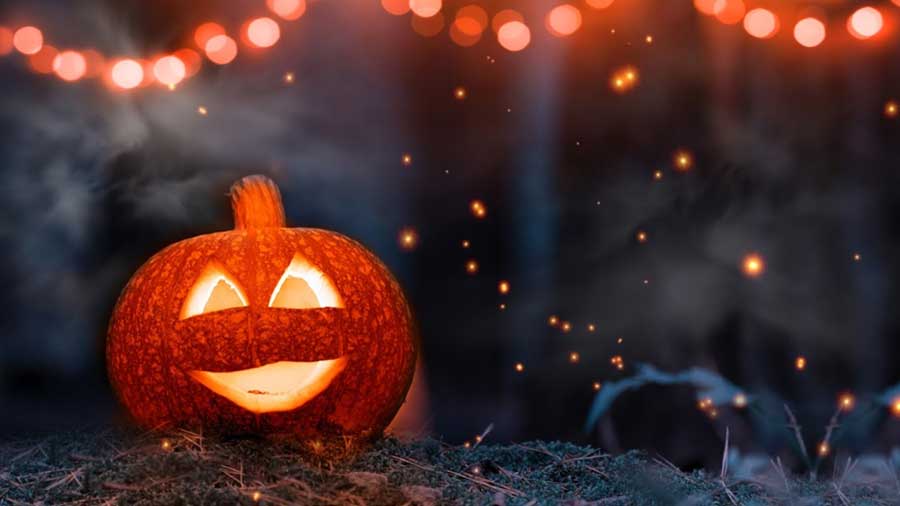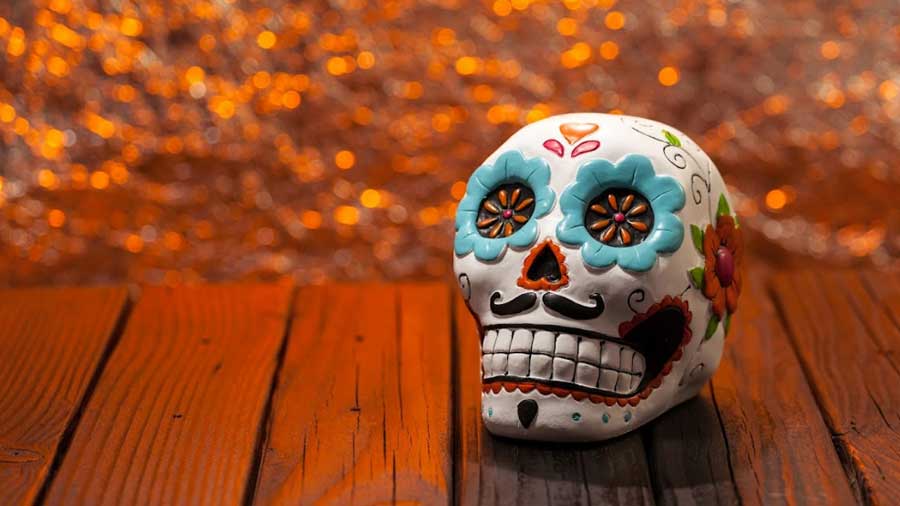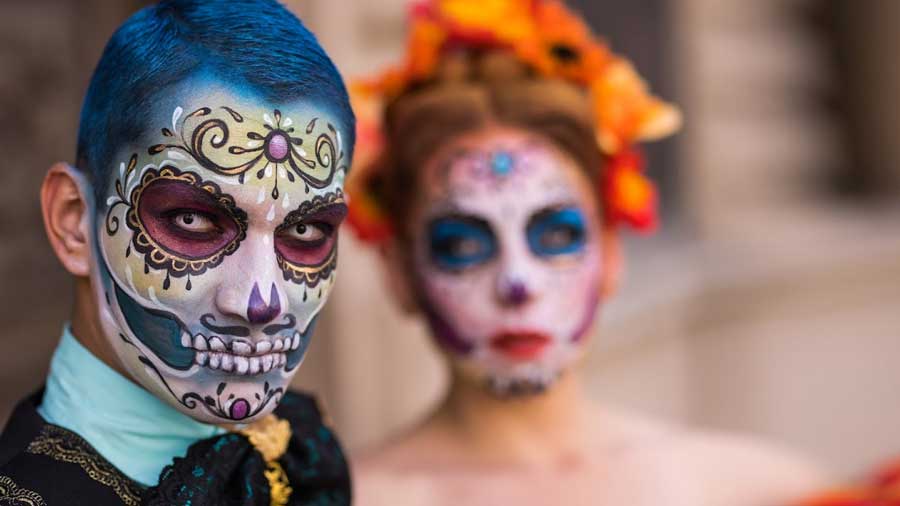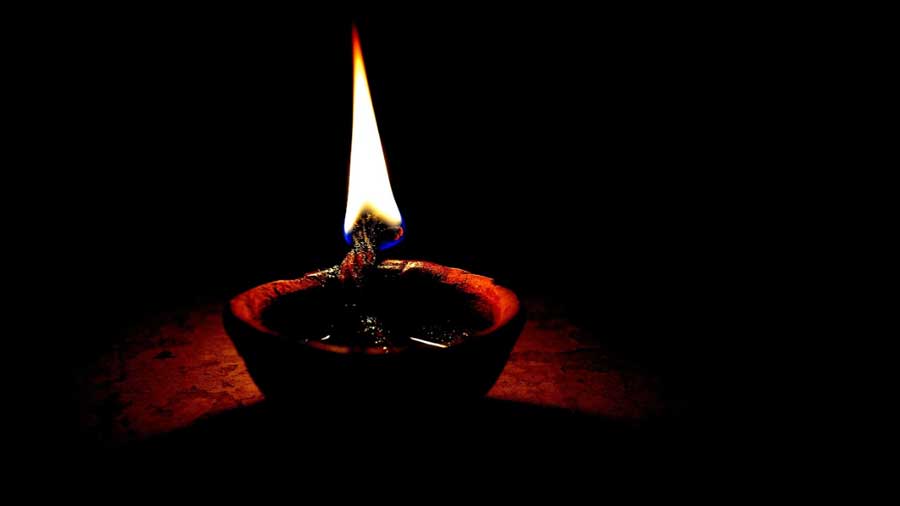Every year, on the eve of Kali Puja and Diwali, households in Bengal observe Bhoot Chaturdashi. To mark this day, family members light 14 earthen lamps – a tradition known as choddo prodip – and place it around the house, such that no corner remains unilluminated. The lamps are meant to ward off dark forces and guide the spirits of our forefathers home.
Legend has it that on this day, a portal opens up between the worlds of the living and the dead, as a result of which, the earth becomes a roaming ground for supernatural entities, be it the souls of the departed or the ghosts and demons traditionally associated with Bengali folklore. And while Bhoot Chaturdashi is a festival that is unique to Bengal, the premise in which it is set, has resonances in other cultures as well.
What ties them further together, is that they are all observed around the same time of the year.
Take for instance, the origins of Halloween.

An important tradition associated with Halloween is the jack o’ lantern, which is made by carving faces on pumpkins
Halloween had its wee beginnings in the festival of Samhain, which was celebrated in ancient Celtic societies, where people believed that on this day, the veil that shrouds the world of the dead from that of the living, was lifted, making way for spirits to enter into the earth’s realm. To scare away these spirits and keep them at bay, the Celts lit large bonfires and dressed up in elaborate costumes – a practice which is kept alive in the jack o’ lanterns and Halloween costumes of today.
Halloween, celebrated on October 31 every year, also marks the beginning of Allhallowtide – a period of three days dedicated to remembering and praying for the souls of the departed. Following Halloween, the triduum continues into All Saints’ Day – a day dedicated to honouring the saints of the Church – before coming to a conclusion with All Souls’ Day, that is celebrated on November 2. On All Souls’ Day, family members traditionally visit the graves of their loved ones, to light candles and leave behind flowers in their memory.
Interestingly, this is also the day of a very popular festival in Mexico, which too is pegged around the concept of honouring the dead.

On All Souls’ Day, people light candles and leave flowers at the graves of their loved ones Amit Datta
Anyone who has watched (and sang along) to Disney’s 2017 box-office hit Coco, is familiar with Día de los Muertos. Aside from its stirring discography and vibrant colours, Coco won fame all around the world and went on to become one of Mexico’s biggest films ever, owing to its depiction of this festival, also known as the Day of the Dead – which too is celebrated on November 2 every year.
This holiday brings together friends and family who set up home altars and ofrendas for those who have passed away. An integral part of these altars are the Calaveras de Azucar i.e. skulls made out of sugar, which are decorated with icing and placed as an offering in memory of the departed, whose name is written on top of it. In fact, the newly popularised practice of painting faces for the celebration, has been inspired by these very sugar skulls that are meant to represent the skeletons of the dead.

A sugar skull Shutterstock
One might argue here that this practice is reminiscent of wearing costumes during Halloween but the two have very different connotations. While the painted skulls of Día de los Muertos are symbolic of the fond remembrance of a deceased friend or family member, the costumes of Halloween were traditionally worn to ward off evil spirits.

A new tradition associated with Día de los Muertos is the painting of skulls onto the faces of people Unsplash
The altars that are set up for Día de los Muertos are also decorated with marigold flowers, since it is believed that the bright orange and yellow hues of the flower, coupled with its distinct scent, help guide the spirits of the departed from the burial ground to their families.
Which brings us back to where we started.
The 14 lamps that are lit during Bhoot Chaturdashi are also meant to guide the last 14 generations of our forefathers (known as choddo purush, in Bengali) and help them find the way back to their families.

An altar with ofrendas for Día de los Muertos Shutterstock
It is striking to note how cultures across the world have certain shared premises that have given rise to festivals which, despite obvious differences in moods and modes of celebration, are all pegged around that one common idea – remembering the departed.
In many ways, it is a testament to the human fascination with the concept of death and afterlife. Or perhaps, honouring the dead is a way of reminding ourselves of the life that is pulsing through us – a thought that is often drowned out by the drudgery and monotony of everyday life.
Whatever be it, one would not be wrong in saying that celebrating death is perhaps a reminder to celebrate the fleeting gift of life itself. It is, as Emily Dickinson said,
“That it will never come again is what makes life so sweet.”
